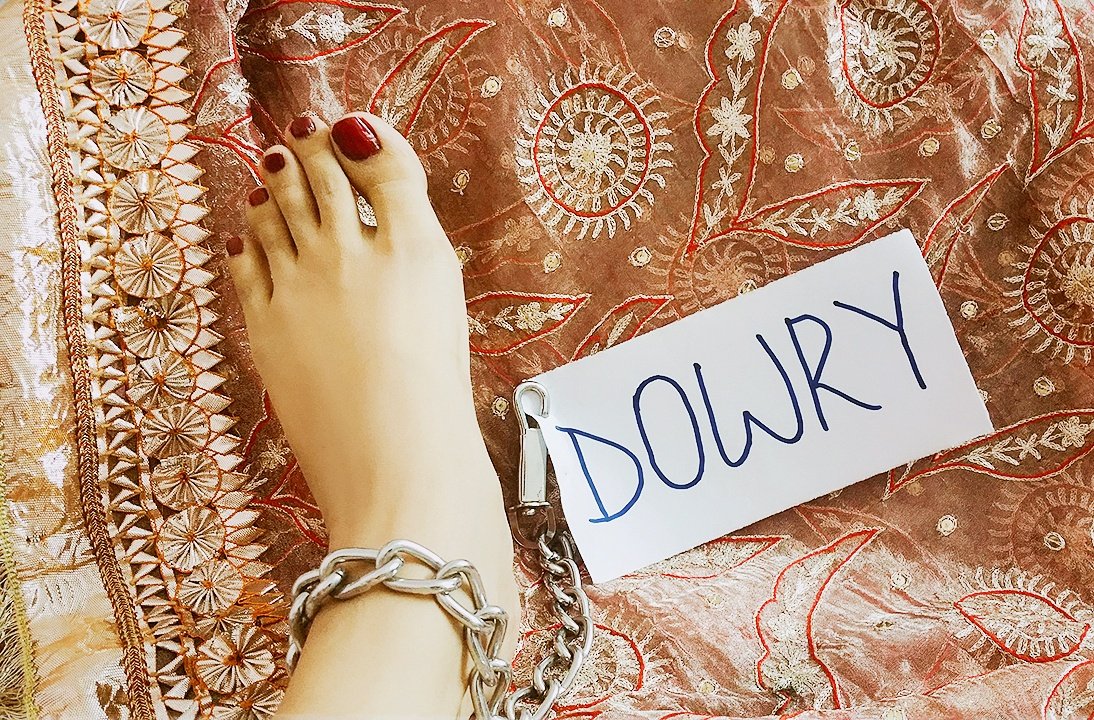The eradication of dowry requires a multifaceted approach that addresses its legal, social, and economic dimensions.
By Mir Shahid
Our society is built upon a multitude of physical and material elements, among which the institution of matrimony or civil union stands as an intrinsic aspect and a cornerstone of our social fabric. It serves as an initiation into societal life and a wellspring of happiness and fulfillment. However, intertwined with the historical and material dimensions of marriage lies a malevolent force that has persistently plagued this institution: the system of dowry.
Despite the existence of various legal statutes aimed at its eradication, the practice of dowry continues to pervade our societal norms. While we reminisce about the “Stredhan” of yesteryears, comprising gifts and clothing bestowed upon daughters by loving parents, dowry, in stark contrast, entails the coercive demand for wealth from the bride or her family, either prior to or following marriage. This archaic custom epitomizes a crude and unembellished extortion scheme orchestrated by the groom’s side, in direct violation of the dignity of women. Moreover, it serves as an indirect conduit for extracting cash and extravagant gifts from the bride’s family, often leading to financial ruin for those who succumb to the demands of prospective grooms.
The relentless pursuit of dowry has reached a crescendo wherein its continuance is no longer tolerable nor sustainable. Instances of humiliation and even violence, including the tragic loss of lives, underscore the profound ramifications of this societal malaise. Parents, driven by the fear of societal stigma and disgrace, are compelled to resort to extreme measures, including the unthinkable act of terminating their own daughters’ lives, in a desperate bid to evade the ignominy associated with an immoral and dowry-ridden society.
The fabric of our society is intricately woven with the roles of both genders, yet the historical subjugation of women persists, relegating them to a status akin to property. Regrettably, women are often perceived not as equal human beings but as objects of pleasure and profit. In our societal construct, women are synonymous with property, and dowry serves as a tangible manifestation of this deplorable paradigm. Dating back to ancient times in India, marriage is construed as a business transaction wherein men expect and demand property from the bride and her family, perpetuating a cycle of exploitation and subjugation.
The perpetuation of such customs not only perpetuates gender inequality but also engenders a culture of violence and abuse against women, both physically and mentally. The Dowry Prohibition Act of 1961 ostensibly outlaws this abhorrent practice, yet its enforcement remains lax, allowing the scourge of dowry to persist unchecked. Various factors contribute to the perpetuation of this system, including societal notions of status, security, education, and the entrenched traditions surrounding marriage. Even economically independent women are not immune to the insatiable demands for dowry, which further exacerbates the cycle of injustice and inequality.
Addressing the scourge of dowry necessitates concerted efforts on multiple fronts. Strict enforcement of existing laws, coupled with extensive awareness campaigns, is imperative to combat this entrenched custom. Empowering women through education and economic independence is crucial to dismantling the patriarchal structures that underpin dowry culture. By fostering a societal shift in attitudes and values, we can endeavor to create a future where the dignity and rights of women are safeguarded and respected.
The eradication of dowry requires a multifaceted approach that addresses its legal, social, and economic dimensions. As we strive for a more just and equitable society, it is incumbent upon us to challenge entrenched customs and advocate for the rights and dignity of women. Only through collective action and unwavering commitment can we hope to emancipate our society from the shackles of dowry and usher in a future marked by equality and justice for all.
The views expressed in this article are solely those of the author and do not necessarily reflect the opinions or views of this Magazine. The author can be reached at [email protected]
Blurb
- The Dowry Prohibition Act of 1961 ostensibly outlaws this abhorrent practice, yet its enforcement remains lax, allowing the scourge of dowry to persist unchecked.
- The fabric of our society is intricately woven with the roles of both genders, yet the historical subjugation of women persists, relegating them to a status akin to property. Regrettably, women are often perceived not as equal human beings but as objects of pleasure and profit.

Leave a Reply